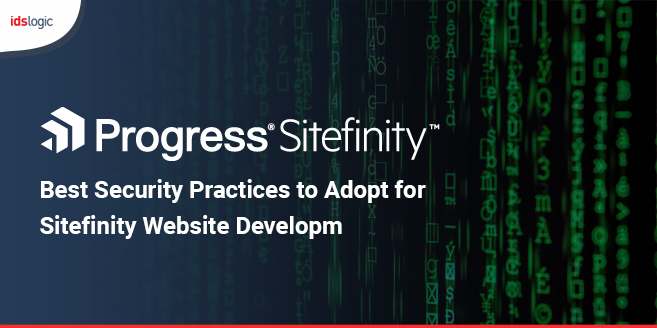Progress Sitefinity is a very popular CMS that offers rich features to business owners so that they can develop websites and have complete control on their content. The CMS goes through various phases from designing, planning and implementation to testing and maintaining the released version. Security is an important part of the entire system of the CMS and progress adopts security review procedures in the design and implementation phases that include qualified security experts to check the vulnerabilities.
With technology developing at an exponential rate, every business organization is adopting digital transformation and is growing enormously with the internet. The technological revolution has also made the daily life simpler, but at the same time it has also introduced threats to which people were never exposed before. Such security threats have made Sitefinity best security practices more necessary and relevant than ever.
Reducing the attack that the computer system can be hacked is the method of preventive control in which the software reduces the vulnerability before a possible attack. Hardening will only make up a significant part of the virtual security and it will also act as a layer of defense to protect any sensitive information like the end user information or business information.
Best Sitefinity Security Practices:
Data Encryption:
Sensitive data whenever transferred via the website to any other external device should always be encrypted with appropriate algorithms based on the risk profile like the data at rest or data in transit. Progress Sitefinity CMS offers encryption at different levels and database levels. All sensitive information should be hashed or encrypted. It is important to run Sitefinity CMS on the servers that needs FIPS compliance is better except for the non-default or external areas.
Permissions, Users and Roles:
Sitefinity CMS development also comes with Membership providers and Role providers that help manage the users in the system and also assign them different roles. This helps to configure proper permissions for managing different types of content and it also comes with a flexible system for defining the granular permissions for each item. Individual Users, Permissions may be applied to different types or items for the variety of operations like the View, Create, Delete, Modify and etc. based on the type of objects, permission and the different system layers and different module levels.
Also Read: Improve the Performance of Your Sitefinity CMS Website by Deploying it on Azure Environment
Web Security Module:
Progress Sitefinity CMS also has an additional layer of protection to the site through the web security module which prevents them from various cyber-attacks and the module can easily be configured only by the website administrator.
- Security HTTP Headers: Sitefinity CMS can send HTTP headers to configure the client’s browsers and turn on the built in security features
- Open redirect Protection: Sitefinity development also comes with built in Open Redirect protection that notifies the user when he or she is leading the site and should be redirected to any other external domain.
- CSRF Prevention: The Web security module allows the IT administrators to configure the centralized mechanism that allows boosting the security of the website cookies, thereby preventing the CSRF vulnerability. Website administrators can set a minimum security policy for all the website cookies by configuring the HttpOnly, SameSite, and Secure attributes.
Site Shield:
Users can also use the Site Shield feature to protect a website which is under development from any unauthorized access. You can also use it to allow the users without the backend permissions to view the site while it is developed. This is basically used to allow the users not having the backend permission to view the site while it is developed.
Also Read: The Benefits if Using Single Sign On with Sitefinity Websites




